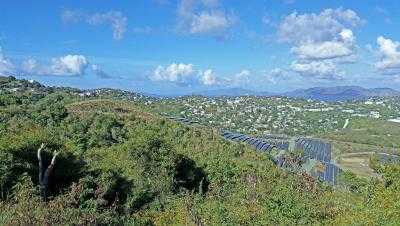Solar energy news in review
 Last week’s headlines were dominated by political actions across the world—from the violent rebellions in the Middle East to state employee protests in Wisconsin, Ohio and elsewhere. The solar industry saw its own protests as well.
Last week’s headlines were dominated by political actions across the world—from the violent rebellions in the Middle East to state employee protests in Wisconsin, Ohio and elsewhere. The solar industry saw its own protests as well.
In Colorado, members of the solar industry protested outside the governor’s office. They marched on the Capitol, protesting a request from the state’s largest utility, Xcel Energy. The company recently reduced the $2.35-per-watt rebate it offered homeowners installing solar to $2.01 per watt. Moreover, the company also requested that the state allow Xcel to drop the minimum rebate level to 25 cents per watt, a potential death knell for residential solar installers.
At the federal level, protests yielded positive results for the DOE’s Solar Decathlon. The DOE and the National Park Service had planned to move the iconic event off the National Mall to allow for the heavily used park to recover. But students and even members from both houses of Congress requested it remain on the mall. After nearly a month of outcry, including letters to department heads from prominent Democrats, they won! The event will be held on the mall, albeit in a different location.
Not all news from Washington, D.C., was good for the solar industry last week. The Republican-led House is looking at eliminating the DOE’s loan guarantee program. The program, while not actually offering loans, has been instrumental for large-scale solar projects and for manufacturing expansion at solar companies. But the DOE is continuing to offer the loan guarantees.
Thanks to robust growth in 2010, solar stocks keep edging up. But with subsidies and incentives being targeted for spending cuts, some investors remain wary about buying in. Still, companies like First Solar (Nasdaq: FSLR) beat projected estimates for full-year earnings in 2010 and raised its guidance for 2011.
Despite potential loss of support, the industry isn’t resting. In fact, it’s continuing to innovate.
Last week American Clean Energy and Envision Solar introduced a new solar carport, the Solar Tracking Tree and a new leasing option. The companies are eyeing urban parking lots as potential solar-powered electric-car charging stations. They believe the lease option for the stations will make them more attractive to parking-lot owners.
Companies are also working to address another huge issue facing the solar industry: What to do when the sun’s not shining? Battery storage is one area that shows potential. And Saft is one company that’s working on battery storage technologies for solar systems. It’s recently been increasing solar storage projects, with commercial-scale and residential installations.
The other side of the equation is trying to get more power for less. HyperSolar’s research into low-cost plastic top sheets, which can increase the amount of sun hitting a photovoltaic cell by 300 percent, is still looking for a patent. The company said the top sheet could allow manufacturers of photovoltaics to make modules with less cells, significantly reducing the cost of the module, while producing the same amount of electricity.
Maybe it’s pie in the sky, maybe not.
The recently completed Indianapolis International Airport has issued a request for proposals for a company to install a 10-megawatt photovoltaic system on unused land at the airport. The system would be equal to the power used at the airport, but the airport would lease the land, allowing the project financiers to reap the other economic benefits of a resulting solar array.
Image courtesy of NREL.



